Stories of Grahas Part 1 by Dr. K S Charak
The Story of Surya, the Sun (Graha) God
Surya (Graha), the Sun-God, is eternal in existence and beyond the limits of form and manifestation. It is through His own Maya or delusive nature that He becomes qualified and manifest. Being there since the earliest possible moment of time, He is also called Aaditya; the word ‘Aadi’ means “the very beginning”.
The fact that Surya was born to Aditi, the mother of gods, is another reason for Him to have acquired the name Aaditya. In the very ancient times when lord Brahma, the Creator, was engaged in formalizing the created universe, lord Surya was born to sage Kashyapa and his wife Aditi.
The Story of the Birth of the Sun-God Goes as Follows:
Several millennia back in the hoary past, internecine conflicts between the gods and the demons were a frequent occurrence. Once during such a conflict, it so happened that the demons completely overpowered the gods.
The latter had to flee for safety. This was a matter of grave concern to Aditi who happened to be the daughter of Daksha, the wife of sage Kashyapa, and the mother of the gods. She decided to find an appropriate solution to the predicament in which the gods, her children, had landed themselves.
She besought Lord Surya to be pleased with her and be born to her as her son so that He could help protect the interests of His brethren, the gods.
Lord Surya was pleased with the steadfast devotion of the wife of sage Kashyapa. Said He to her:
“Mother! I shall fulfill your desire. With a thousandth part of My being, I shall manifest Myself as your son in your womb and defend your progeny.”
Sage Kashyapa was very pleased to know that the Sun-God would be born as his son. In due course of time, Surya was born as the son of Kashyapa and Aditi. The gods were pleased too to have lord Surya as their brother. It has been stated in the Puranas that Lord Brahma, the Creator, issued forth from the lotus that sprouted from the navel of Lord Vishnu, the Lord Eternal. From Brahma came his son, the sage Marichi.
From Marichi was born sage Kashyapa, and from Kashyapa was born Surya, the Sun-God. With His ever-tormenting looks, lord Surya annihilated His opponents and re-established the path of spirituality. In astrology, the Sun is a fierce planet which primarily stands for discipline, dignity and administrative ability. It is also a significator for the soul of the individual. The strength or weakness of the Sun in a horoscopic chart reflects on the general strength or weakness of the native.
After the churning of the ocean by the Gods and the Demons, when the Amrita, the elixir of life, was being distributed amongst the gods, the Sun pointed out the disguised Rahu who was standing amongst the gods to taste the Amrita. At this exposure, Rahu was naturally annoyed with the Sun whom he started eclipsing periodically. At this, the Sun-God thought to Himself:
“I exposed the hoax of Rahu for the benefit of all the gods. Now, its consequences have to be borne by Me alone.”
Annoyed thus, the Sun-God shone with dazzling brilliance in order to reduce to ashes the whole cosmos. Even at night there was no respite from the heat generated by the Sun-God. It appeared as if nothing would survive the wrath of the Sun. At this juncture, the gods, along with Lord Brahma, sought the help of another son of Sage Kashyapa, known as Aruna, to absorb the scorching heat of the Sun.
Aruna took the position of the Sun’s charioteer and shielded the three worlds against being singed by a furious Sun-God. In astrology, the Sun is a fiery planet which is capable of damaging the house it occupies as also the planets that are associated with it, unless there is a predominant benefic influence shielding its fury.

The effulgent son of the sage Kashyapa, the Lord Surya, can scorch the three worlds. He was married to Sanjna, the daughter of Vishwakarma, the divine architect. To Sanjna were born Vaivasvata Manu, the lawgiver, and the twins Yama, the god of Death, and Yamuna. Sanjna was very upset with the heat and brightness of lord Surya, and found His proximity to her virtually intolerable. So, she decided to leave Him.
With an exercise of Maya or delusive process, Sanjna created her duplicate, Chhaya, from her own shadow. This Chhaya looked exactly like Sanjna and was supposed to replace Sanjna in her absence. Chhaya saluted Sanjna with folded hands and thus spoke to her:
“Dear one! What are your orders for me?”
“Blessed be you!” said Sanjna. “I am leaving for my father’s abode. You may please stay here in peace. Take care of my two sons and daughter. Do not disclose this secret even to lord Surya.”
Chhaya agreed to do her bidding, but with a rider: “I shall keep this secret to me alone, unless I am pulled by the hair and threatened with a curse. You may thus depart in peace.”
When Vishwakarma knew of Sanjna’s arrival at his residence, and the reason for her doing so, he reprimanded her and asked her to proceed to her husband forthwith. Dismayed, Sanjna changed into a mare and proceeded northward to live on grass and vegetation.
Oblivious of the truth, Lord Surya considered Chhaya to be Sanjna only and from her begot two sons, Savarni Manu and Shanaishchara (Saturn or Shani). Chhaya would show greater affection to her children but would normally ignore the children of Sanjna. This was not taken kindly by Yama who insulted her, tramping his foot on the ground in anger. This infuriated Chhaya who cursed Yama thus:
“May this foot of yours drop off!”
Yama was petrified. He went to his father and narrated the whole incident to Him.
“I insulted her in a childish outburst,” said Yama. “I seek your forgiveness and request that I be spared from the effect of my mother’s curse. A son may well be unsonlike; but surely a mother cannot be unmotherly.”
Lord Surya partly negated the effect of the curse. Then He enquired of His wife thus:
“For a mother, all her children are alike. How can you then treat them unequally?”
Chhaya did not make a satisfactory answer. At this, Lord Surya went into mental concentration and with his yogic powers found the truth out. He held Chhaya by the hair and was about to pronounce a curse on her, but she pleaded for forgiveness and narrated the whole truth to Him.
Burning with anger, lord Surya went to Vishwakarma as if to turn him to ashes. Vishwakarma was wise; he consoled his son-in-law thus:
“Dear Aaditya! Your effulgence is scorching and unbearable. This is the reason why Sanjna forsook You. She has taken the form of a mare and grazes in the northern pastures, protecting her identity as well as her virtue.”
He further added, “Lord of the Gods! Permit me to make Your appearance more charming and beautiful.”
The Sun-God was initially squarish, high and slanting. Vishwakarma chiseled off His offending layers and turned Him into a bright, beautiful and charming God. His face acquired a reddish color. He changed His form into a horse befitting the form His dear spouse had acquired. Then He went to Sanjna, grazing grass in the form of a mare. She first hesitated to accept Him but yielded when she realized that it was the Sun-God Himself in the form of a horse.
The twins, Ashwini-Kumaras, are the result of their union. The Ashwinis are the physicians of the gods. In the zodiac, they constitute the first nakshatra. Later, during the time of the Mahabharata, the twins Nakula and Sahadeva, the youngest of the five Pandava brothers, and adept in astrology as well as Ayurveda (including veterinary medicine), were born of them.
Lord Krishna describes the Sun as the God-manifest, the ‘eye’ of the whole existence. Provider of plenty, the Sun God was propitiated by the eldest of the Pandava brothers, Yudhishthira, during their days in exile. The Sun-God offered to Yudhishthira the ‘Akshaya Patra’, the never-emptying vessel. Food cooked in such a vessel would be sufficient to feed any number of individuals and would end only when Draupadi, their common spouse, would have her share. The dasha of a favorable Sun ensures good and sumptuous food. When adversely oriented, the Sun dasha gives contrary results, including unwholesome and untimely meals.
In Vedic astrology, the Sun is a significator of the eyes (particularly the right eye). Influencing the seventh house of the horoscope, the Sun can lead to separation from the spouse even as He Himself separated from His own wife. The Sun also stands for baldness and loss of hair, a likely consequence as of the pulling at the hair of His shadow-spouse Chhaya.
Being the most significant of the nine grahas, the Sun is propitiated in order to acquire proficiency in the knowledge of Astrology and Ayurveda. The famous Yogic exercise labelled as Surya Namaskara is a physical-spiritual method of propitiating the Sun, the twelve steps of this particular exercise signifying the twelve signs of the zodiac. Sound physical and spiritual health, as well as sound knowledge of Jyotish and Ayurveda, are the consequences of the grace of the Sun-God.
The Sun in Astrology
Physical attributes : A square build, scanty but curly hair, lovely appearance, good intelligence,
impressive voice, medium stature, red eyes, dark red complexion, strong bones, bilious nature, firm temperament, and saffron robes.
Nature : A natural malefic
Gender : Masculine
Caste : Kshatriya
Direction : East
Place : Temple
Directional strength : Tenth house of the horoscope
Own Sign : Simha (Leo)
Exaltation : Mesha (Aries) 10°
Mooltrikona : Simha (Leo) 0° to 20°
Debilitation : Tula (Libra) 10°
Friends : Moon, Mars, Jupiter
Enemies : Venus, Saturn
Neutral : Mercury
Significations: Physical strength, soundness of health, dominance, courage, soul, father, king, royal favour, high status, kingly pursuits, mental purity, summer season, heat, fire, stones, thorny trees, mountains, forests, eastern direction, bitter taste, indignation, hostility, gold, ruby, timber, lotus, saffron, bones, heart, baldness, right eye, the world of mortals.
The Story of Soma, the Moon God
Having lost to the demons in their bloody encounters, the gods lost vigor and
Hcourage. To raise their spirits, Lord Vishnu counselled them thus:
“Rise ye gods. Gather courage and seek the help of the demons to extract Amrita, the elixir of life, from the Ocean. The Amrita will invigorate you against the demons. While accomplishing a great deed, there is no harm in seeking the help of one’s foes.”
The Lord further assured them that once Amrita was extracted from the Ocean, He would ensure that it did not fall into the hands of the demons.
It was thus during those very ancient times that the gods and the demons joined hands to procure Amrita from the Ocean. The process of extraction of the Amrita was explained by Lord Vishnu, the Preserver, to both the gods and the demons. It involved the churning of the mighty Ocean, the so-called Samudra-Manthana, using the great Mandarachala mountain as the churn-staff and the formidable serpent king Vasuki as the string. The Ocean yielded several valuable things during the churning process; Soma, the Moon-God, effulgent like the radiant Sun and blessed with a cool and pacifying lustre, was one of them. This Moon graces the head of lord Shiva, the Destroyer. Having originated from the Ocean, the Moon behaves as a watery planet and, when afflicted, gives rise to specific afflictions characteristic of its watery nature. The story of the birth of the Moon has been described in the Harivamsha Purana, one of the eighteen major Puranas, as follows:
In ancient times, Lord Brahma, the Creator, thought of effecting the Creation. Through His mental concentration, He created His sons one of whom was Sage Atri. For three thousand divine years, Sage Atri performed hard penance with the aim to procure Soma, the Moon-God, as his son. Because of his intense concentration on Soma, the body of Sage Atri itself became Moon-like.
From the eyes of the austere sage, a Moon-like effulgence flowed out and, spreading in all the ten Directions, brightened all in this process.

The ten ‘Directions’ acquired this effulgence and, employing the prescribed technique, jointly established it in their womb. However, they were unable to retain this effulgence which fell off their womb onto the earth. This was Soma, the Moon, with all his cool and lustre. It was for Lord Brahma to rescue Soma from this debile and fallen state, by putting Soma on His chariot and getting each of his rays strengthened through the chanting of the Vedic hymns by His seven Manasa Putras, the sons begotten through mental concentration.
During that early stage of creation, the process of sexual union as a means of begetting progeny had not yet been introduced! This story, however, gives us an idea that when the Moon is weak or debilitated in the horoscope it can be, as well as needs to be, strengthened through appropriate remedial measures, preferably the chanting of the stotras or hymns.
As Lord Brahma’s chariot, with Soma seated in it, circumambulated the earth twenty-one times, some of the effulgence of Soma dripped off and led to the production of medicinal herbs on the earth. These potent herbs protect and preserve the four types of living forms: the Jarayuja (man and other animals born from the womb), the Andaja (born from an egg), the Svedaja (those that grow out of heat and moisture), and the Udbhija (plants that sprout up from the ground; the vegetation). The Moon god thus nurtures this whole Creation. Lord Brahma conferred on the Moon the lordship over seeds, medicines (herbs), Brahmins and water.
The Moon has a special role to play in the profession of medical people who use either herbal preparations or liquid medicines in their profession. The rulership of the Moon over seeds has a special significance when applied to human beings: the Moon determines the genetic link between the child and its parent, or among the siblings. When Moon got coronated as the ruler of the above four elements, Daksha the Prajapati gave his twenty-seven daughters to Moon in marriage.
The twenty-seven daughters of the Prajapati are the twenty-seven nakshatras established along the zodiac. The Moon-God visits them all one after the other, thus segregating time into its various elements and indicating festivals, months, and the like. The Moon-God was extremely fond of his wife Rohini and wanted to spend all the time with her in preference to his remaining twenty-six wives. This preferential behavior of Moon toward Rohini infuriated Daksha, his father-in-law, who cursed the Moon-God with Kshaya Roga or consumption.
This rendered Moon critically ill. He was saved through the intervention of his father, the Sage Atri. The various diseases of the chest, like tuberculosis, pleurisy, pleural effusion, effusions in various body cavities, chronic chest infections, etc., are all under the influence of the Moon in the horoscope. Being a cold planet, fevers associated with chills and rigors fall under the control of the Moon. Its watery nature also justifies it as a significator for blood. Under its influence, along with the influence of Mars, the menstrual cycle of women is regularized.
The Moon is the fastest of the grahas or planets. Quite appropriately, it happens to be the karaka or the significator for the mind, the highly fluctuating component of human nature. Mental stability and instability depend upon the disposition of the Moon in the horoscopic chart.
Afflictions of the Moon create umpteen psychological upsets. It may be of interest to note that the Moon-God, under a particularly adverse state of mind, charged with the arrogance of power and prosperity, did not hesitate to forcibly abduct the wife of his divine preceptor, Brihaspati, for physical exploitation. When the gods tried to force him to return his captive, who was supposed to be equivalent to a mother to him, he sought refuge with Shukracharya. He well knew that Shukracharya was virtually invincible for sage Brihaspati as well as for the gods who might choose to help Brihaspati. It was after a long persuasion that he agreed to return the spouse of his preceptor. It was during her captivity that Tara, the wife of sage Brihaspati, had thus cursed the Moon-God:
“You would be devoured by Rahu, obscured by the clouds, and blemished to view. Without doubt, you would suffer from Kshaya Roga.”
Tara’s curses produced their effects in the course of time. The sin committed by the Moon indicates a particularly fallen state of mind. The numerous sexual perversions, criminal tendencies, suicidal and homicidal instincts, and mental afflictions, all can be explained on the basis of an afflicted Moon in the horoscopic charts of the individuals so affected.
The Moon-God abducted Tara on the occasion of the fourth tithi (lunar date) of the Shukla Paksha (waxing phase) in the month of Bhadrapada (when the Sun passes through the nirayana Simha or Leo). Viewing the Moon on this day is considered inauspicious.
To propitiate the sin of the Moon-God, Lord Shiva and Lord Brahma washed him clean in the waters of the Ocean. Later, lord Shiva, with His yogic powers, bisected the Moon and established one half on His head. Lord Shiva thus acquired the name Chandra-Shekhara. The other half of the Moon, which was blemished, was left amongst the gods to continuously feel ashamed and humiliated. Finding this unbearable, the Moon-God gave up his physical body which Lord Brahma again immersed in the Ocean. It was then Sage Atri, his father, who rescued the Moon-God from the Ocean, much chastened and purified, his status and honour restored by the divine benevolence of Lord Shiva and Lord Brahma.
The Moon is an extremely important planet in Vedic astrology. Some astrologers consider it to be almost as important as the lagna itself. An appropriate analysis of the horoscope involves the assessment of various planets not only in relation to the lagna but also from the Moon. A strong Moon in the horoscope is a great asset for the native. Despite the sin that the Moon committed by abducting the wife of his preceptor Brihaspati, the latter does not harbor any ill will towards the Moon. In fact, both the Moon and Jupiter are very close friends and the two together constitute a highly benefic combination, the Gaja-Kesari yoga. Jupiter in fact attains a special status, that of exaltation, in Karka (Cancer), the sign owned by the Moon. From Jupiter’s wife Tara, a son was born to the Moon; this was Buddha or Mercury, the planet concerned with logic and discrimination. The blood and its circulation in the body fall under the influence of the Moon. The Moon also controls over weather fluctuations and tides in the oceans.
The Moon in Astrology
Physical Attributes: A slim but roundish body, beautiful appearance, lovely eyes, sweet tongue, phlegm and wind in his composition, white complexion, short curly hair, amiable but restless nature, discriminating wisdom, excessive sexual urge, and white robes. Nature : A natural benefic
Gender : Feminine
Caste: Vaishya
Direction : North-west
Place : Watery place
Directional strength : Fourth house of the horoscope
Own Sign : Karka (Cancer)
Exaltation : Vrisha (Taurus) 3°
Mooltrikona : Vrisha 4° to 20°
Debilitation : Vrishchika (Scorpio) 3°
Friends : Sun, Mercury
Enemies : None
Neutral : Mars, Jupiter, Venus, Saturn
Significations: Mental strength and stability, beauty, grace, fame, happiness, mother, intelligence, sense of humor, contentment, laziness, sleep, liquids, water, milk, honey, curd, delicious fruits, fish and aquatic animals, snakes and other reptiles, pearls, royal favors, expanses of water, pilgrimage, shyness, modesty, lover, flowers, perfumes, white color, silver, blood disorders, pleurisy, tuberculosis, malarial fever, sleep disorders, menstrual disturbances, left eye, the world of the Manes.
The Story of Mangala or Mars
A cycle of Creation coincides with the day of Brahma, the Creator.
When the Lord sleeps, there is a phase of Annihilation and total inactivity. Another cycle begins as the Lord wakes and engages Himself in the process of creation. Countless such cycles go on incessantly extending beyond beginning and end.
There was naught else but water before the beginning of the new cycle of Creation. When Lord Brahma got up at the end of His night, He found all existence nonexistent. There was no light, no wind and no motion, only a limitless body of water which was the body of Lord Himself. The Lord had engulfed even the Mother-Earth, the support for all life-forms, into His abdomen at the beginning of His slumber. He thought of creating the Universe once again.
From His own body, Brahma the Creator produced Swayambhuva Manu and his consort Shatarupa. He then bade Manu to beget progeny through the sexual process. Lord Brahma had earlier produced His children through mental activity, but they could not effectively populate the earth. Manu agreed to do his father’s bidding but needed some land to settle on. He thus requested Brahma, his father, to retrieve the Mother Earth from the bosom of the immense Ocean.
Lord Brahma concentrated on the import of His son’s request.
“Even while I am engaged in the process of Creation,” He pondered, “Vasundhara, the Mother Earth, lies somewhere at the bottom of this Ocean. Some means there must be to retrieve Her. What should I do about it?”
Even as Lord Brahma was immersed in deep thought, a tiny young one of a boar, not larger than the distal phalanx of His thumb, emerged from His nostrils and in no time acquired the size of an elephant, dangling in the empty space. Manu as well as the Rishis gathered there were astonished and offered prayers to this manifestation which they considered as a blessing from the Almighty Lord. Soon this Boar attained the dimensions of a huge mountain and started roaring with great force. This was the ‘Varaaha’ or the ‘Boar’ incarnation which the Lord had acquired in order to retrieve the Earth from the bottom of the Ocean.
The mighty Varaaha smelt for the Earth with His snout in all directions. Then, with a heavy thud, He jumped into the water, as if tearing through the very abdomen of the Ocean, creating a terrible sound. He pierced through the endless body of water and found the all-sustaining Earth resting at the bottom of the Ocean. On His jaws He lifted the Earth, even as an elephant adorns his head with a bunch of flowers, and brought Her to the surface.
There He placed her on the surface of water to float like a lotus-leaf. It is said that the serpent king Shesha naga supports the Earth from below lest it should tumble over. Lord Varaaha then planted various mountains as well as other geographical features here and there on the surface of the Earth in order to enable Her to sustain life.
The demon-king Hiranyaksha was very powerful. He had attained immense powers through austerities. Intoxicated by his physical might, he tormented the Gods who ran helter-skelter in front of him. Looking for a worthy match, he jumped into the Ocean and confronted Varuna, the Sea God. Varuna, however, declined to fight him suggesting that he face Lord Varaaha for an appropriate combat. Hiranyaksha liked the idea and proceeded towards the bottom of the Ocean where Lord Varaaha was engaged in retrieving the Mother Earth. The demon mocked at the Lord.

“Hey, wild animal, where have you come from?” he roared on seeing Lord Varaaha. “You pig of a godling,” he continued, “you cannot proceed without fighting me.”
Lord Varaaha, however, ignored the demon and brought the Earth to the surface. Having stabilized her on the surface, He engaged the demon in battle and after playfully fighting him He finally killed him with His bare hands.
The Earth, having been established in her orbit, felt relieved and comfortable. In Her immensely beautiful form, she approached Lord Varaaha, now in a highly attractive appearance, and sought His physical association. The two together spent one divine year, away from the eyes of the world.
They lost all sense of day and night during this period. At the end of one year, Lord Varaaha offered obeisance to Her and parted. By this time, the Earth was pregnant. She gave birth to Mangala and brought the child up with great love. Later, Mangala was given the status of a ‘graha’ or planet by Lord Shiva. Mangala or Mars, being the son of Mother Earth, is a significator of lands, houses, home, soil, earthenware, and even endometrium (the ‘soil’ where the ‘seed’ is sown and the progeny results).
Long long ago, Daksha Prajapati, a progenitor of the human race, gave his daughter, Sati, in marriage to Lord Shiva. He, however, soon developed a dislike for his Son-in-law. Once, Daksha undertook a grand yajna or sacrifice. Lords Brahma and Vishnu, as well as several exalted rishis, renunciants, gods and celestial beings were invited to the yajna and offered due obeisances and respects. Such a courtesy, however, was not extended to Lord Shiva, who was not even informed about, let alone invited to, the yajna.
Sati, the divine consort of Lord Shiva, saw the Moon God with his consort Rohini proceeding in a hurry. Through a friend of hers, she came to know that they were going to attend the yajna of Daksha Prajapati. Sati was perplexed.
“My father is conducting a yajna and we have not been informed about it,” she thought. “Even my mother seems to have forgotten me. I should ask Lord Shankara the cause of it.”
She went to Lord Shiva and enquired why He was not inclined to attend the sacrifice being conducted by her father.
The Lord replied in a sweet tone, “Blessed one! Those whom your father considers worthy of respect are already attending the yajna. Dear one!” He continued, “Those who intrude anywhere uninvited suffer humiliation worse than death.”
Sati was not completely satisfied. She also wanted to find out why her father had not invited her husband, Lord Shiva, the Lord of the gods and the Essence of all yajnas.
“Lord of the three worlds,” she said, “please permit me to go and attend the yajna.”
Lord Shiva was aware of the inevitable future. He permitted Sati to go to her father’s house. When Sati met her father, she enquired why her husband, the Lord of the three worlds, was not invited to the yajna. This infuriated Daksha who spoke thus to Her:
“Dear daughter, you are not really needed here. You may stay here or go away as you please. You have not been invited. Your husband, the so-called Shiva, is an emblem of Amangala (inauspiciousness). He is unclean, unkempt and the lord of the inauspicious spirits. He does not deserve to be invited to a yajna of this stature.”
Sati was deeply hurt at the venom her father had spewed against her beloved husband. Unable to tolerate this humiliation, she jumped into the sacrificial fire and died.
When Shankara got the news of His wife’s death in the sacrificial fire, His wrath knew no bounds. He decided to destroy both Daksha and his yajna. From the forehead of the infuriated Lord trickled a drop of perspiration which immediately transformed into a strange man-like form with innumerable faces and eyes, and with thousands of hands and feet. This dazzling being was Virabhadra, the frightful destroyer of the yajna as well as all that was related to the yajna. Lord Shiva thus spake to him:
“Valiant Virabhadra! Go immediately and destroy the yajna of Daksha.”
Virabhadra proceeded fast to the yajna. A great battle ensued between Virabhadra and his followers on the one hand, and the several gods on the other. Daksha tried to seek the assistance of Lord Vishnu who declined to help saying, “The only way out is to placate Lord Shiva and seek His forgiveness.”
The gods suffered defeat at the hands of Virabhadra. The yajna was destroyed. Daksha himself was beheaded by Virabhadra and his head burnt in the yajna-fire.
Virabhadra finished off all that stood in his way. He pierced through the nether world and dried off the oceans. Then he readied himself to burn into ashes all the three worlds. At this, Lord Shiva stopped him saying:
“Virabhadra! You have already destroyed the yajna of Daksha Prajapati. Control your urge to destroy the rest of the creation. Bathe now and be a source of peace to all grahas. You will acquire the name Angaraka (‘burning charcoal; an incendiary spark’)”.
Virabhadra immediately became pacified. Soon he took birth as Mangala from the Mother-Earth and, with the blessings of Lord Shiva, acquired the status of a graha.
The word ‘Mangala’ literally means ‘auspicious’. Mars, however, also represents the fury of Virabhadra. The disposition of Mars in a horoscope is an important factor to be considered while matching horoscopes for matrimonial purposes.
Mars in Astrology
Physical attributes: Fierce red eyes, short stature, tough and youthful body, generous disposition, shining, short and curly hair, fickle but valorous nature, a naturally malefic (Tamasika) inclination, eagerness to hurt, easy excitability, bilious disposition, red robes. Nature : A natural malefic.
Gender : Masculine.
Caste: Kshatriya.
Direction : South.
Place : Place of fire.
Directional strength : Tenth house of the horoscope.
Own Sign : Mesha (Aries) and Vrishchika (Scorpio).
Exaltation : Makara (Capricorn) 28°
Mooltrikona : Mesha 0° to 12°
Debilitation : Karka (Cancer) 28°.
Friends : Sun, Moon, Jupiter
Enemies : Mercury
Neutral : Venus, Saturn
Significations: Courage, valor, aggressiveness, physical strength, arrogance, combat, administrative ability, capacity to punish, risky ventures, leadership, fame, dominance, cruelty, adultery, surgery, commander of an army, non–vegetarian food, fire, earthenware, siblings, red color, home, land, soil, poison, marrow, bile, muscles, accidents, surgical operations, injuries, burns, head injuries, cuts and wounds, biliary disease.

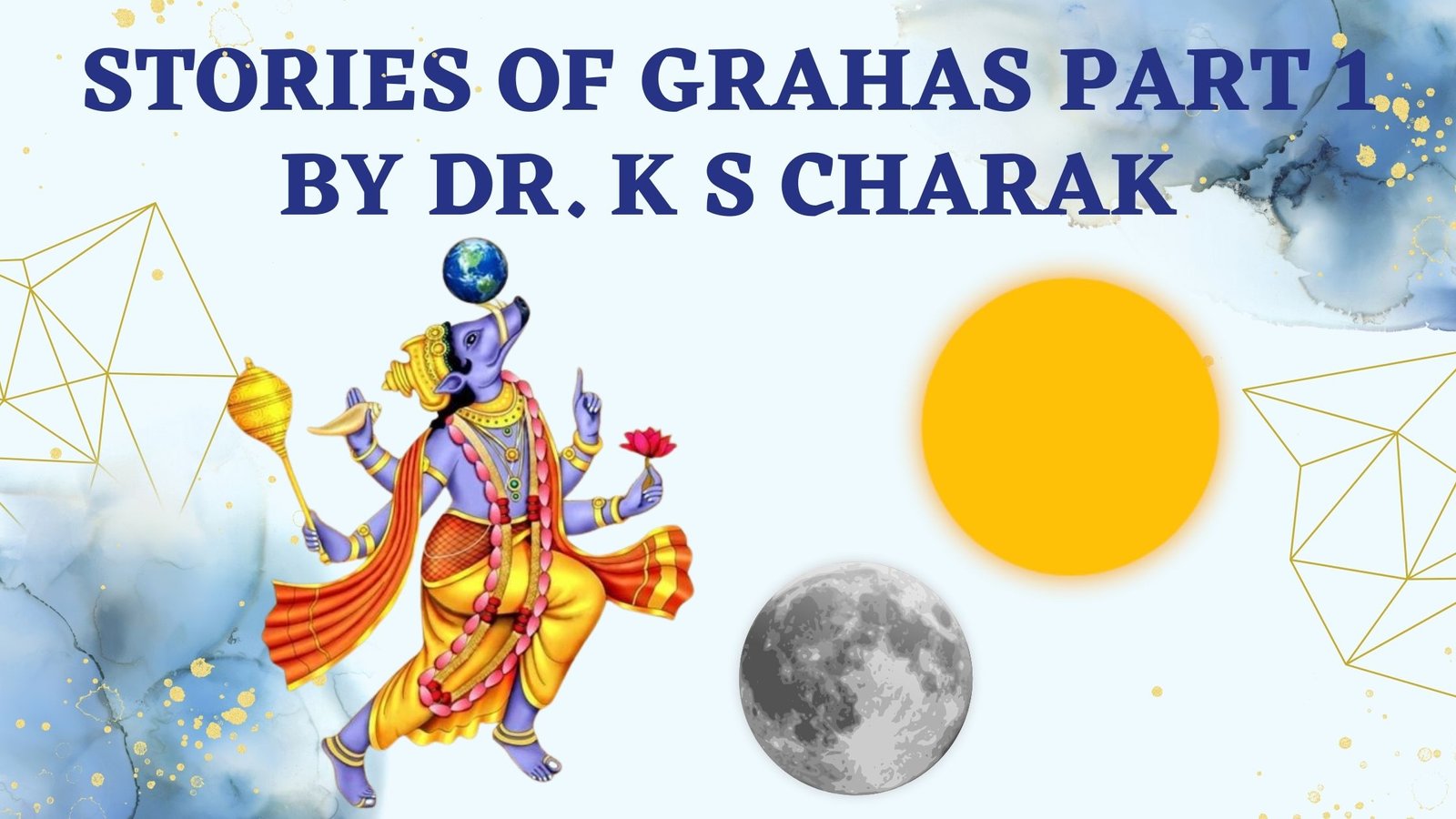


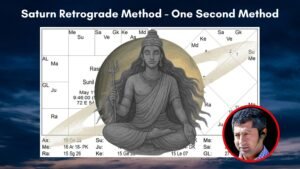
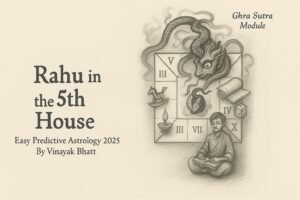
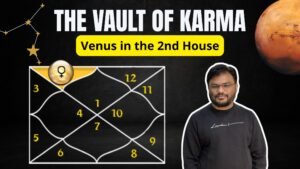
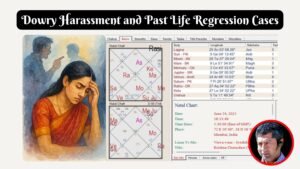
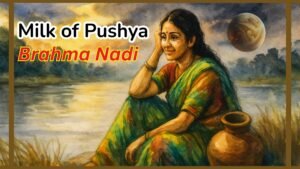
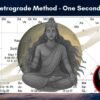
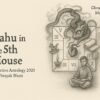


Leave a reply
You must be logged in to post a comment.